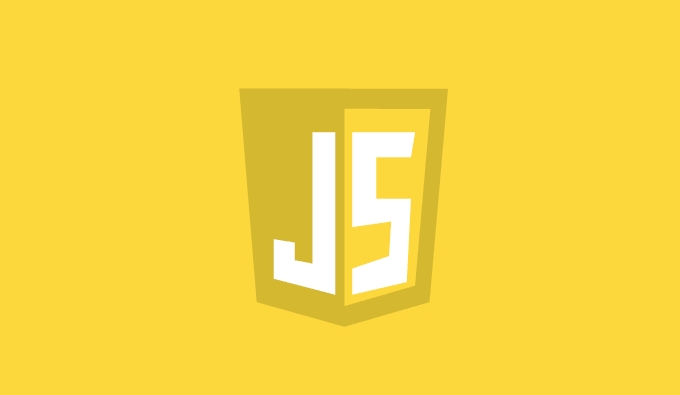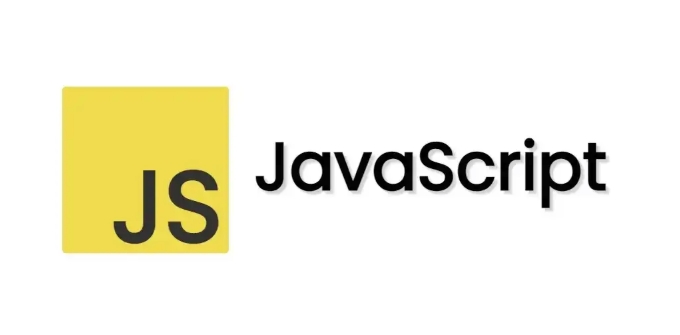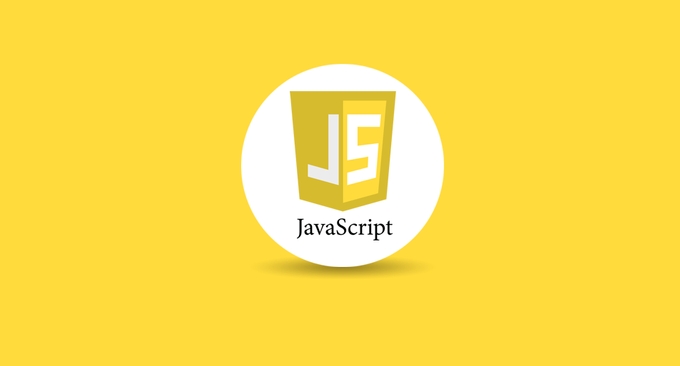The best JS roundup for top front-end developer interview questions
Jul 07, 2025 am 12:25 AMThere are four main types of high-frequency JavaScript problems in front-end interviews: 1. Scope and closures, you need to understand the application scenarios and memory leak causes, and you can implement such as counters; 2. The direction of this, you need to master the call context and arrow functions; 3. Prototype and inheritance, understand the implementation process of constructors, prototypes, proto relationships and new; 4. Asynchronous programming and event loops, distinguish between macro tasks and micro tasks, and master the principles and execution order of Promise and async/await. These issues are examined in-depth understanding and practical application capabilities, and need to master the core mechanism in combination with practice.

If you are preparing for an interview for a front-end development position, especially the JavaScript part, you may be wondering: What exactly are the questions that are most often asked? Are there any core knowledge points that must be mastered?

The answer is yes. Below we have compiled several JS knowledge points and related issues that appear frequently in front-end interviews and are easily overlooked to help you check for omissions.

Scope and closure: Not just a conceptual question
This is what almost every front-end interview involves. Many students know that "closures are functions accessing external variables", but not many people can really explain the application scenarios and side effects.
- Examples of FAQs:
- What is a closure?
- Why is closures likely to cause memory leaks?
- Implement a counter using closure?
In practical applications, closures are often used in modular code and encapsulating private variables. for example:

function createCounter() {
let count = 0;
return function () {
count ;
console.log(count);
};
}
const counter = createCounter();
counter(); // 1
counter(); // 2At this time, the interviewer may ask: "How else can it be achieved without closures?" or "When will this count variable be released?" This kind of question is actually examining your understanding of the garbage collection mechanism.
This point of view: Stop memorizing it by rote
This is one of the most error-prone keywords in JS. Many people rely on memorizing different binding rules to judge this direction, but once they encounter variant questions during the interview, they are likely to get stuck.
- The key point is to understand the call context:
- Who called the function?
- Has the function changed this by bind, call, apply?
- Is it an arrow function? (The arrow function does not have this of its own)
For example:
const obj = {
name: 'Alice',
greet: function () {
setTimeout(function () {
console.log(this.name); // undefined
}, 100);
},
};
obj.greet();At this time this points to window or undefined (strict mode), not obj. The workaround is usually to use arrow functions or cache this in advance:
setTimeout(() => {
console.log(this.name); // Alice
}, 100);Prototype and inheritance: basic but easy to ignore details
Although ES6 now introduces class syntax, the underlying layer is still based on the prototype chain. Many developers only stay at the "class extends" level and ignore the essence of the prototype chain.
- Frequently asked questions include:
- What is the relationship between constructor, prototype, and proto ?
- What did the new keyword do?
- How to implement an inheritance?
The process of new can be summarized into the following steps:
- Create an empty object {}
- Set the proto of this object to point to the prototype of the constructor
- Point this in the constructor to the object and execute
- Return this object (unless the constructor returns another object)
Understanding these will help you avoid errors when writing complex class structures.
Asynchronous Programming and Event Loop: Things that must be explained clearly
Asynchronous processing is a major feature of JS and is also a must-have for interviews. From callback to promise to async/await, progressing layer by layer.
- Frequently asked questions include:
- What is the difference between macro tasks vs micro tasks?
- Promise status flow?
- How is the underlying async/await implemented?
To give a classic example:
console.log('Start');
setTimeout(() => {
console.log('Timeout');
}, 0);
Promise.resolve().then(() => {
console.log('Promise');
});
console.log('End');The output order is:
Start End Promise Timeout
This is because Promise.then belongs to micro-tasks and takes precedence over macro-task execution. This kind of question is very common, but many students just remember the order and do not understand the event loop mechanism behind it.
Basically that's it. These questions cannot be fully grasped by cramming temporarily. It is recommended to think more about the principles when writing code and understand them in combination with practice, so that you can deal with them freely during the interview.
The above is the detailed content of The best JS roundup for top front-end developer interview questions. For more information, please follow other related articles on the PHP Chinese website!

Hot AI Tools

Undress AI Tool
Undress images for free

Undresser.AI Undress
AI-powered app for creating realistic nude photos

AI Clothes Remover
Online AI tool for removing clothes from photos.

Clothoff.io
AI clothes remover

Video Face Swap
Swap faces in any video effortlessly with our completely free AI face swap tool!

Hot Article

Hot Tools

Notepad++7.3.1
Easy-to-use and free code editor

SublimeText3 Chinese version
Chinese version, very easy to use

Zend Studio 13.0.1
Powerful PHP integrated development environment

Dreamweaver CS6
Visual web development tools

SublimeText3 Mac version
God-level code editing software (SublimeText3)

Hot Topics
 Java vs. JavaScript: Clearing Up the Confusion
Jun 20, 2025 am 12:27 AM
Java vs. JavaScript: Clearing Up the Confusion
Jun 20, 2025 am 12:27 AM
Java and JavaScript are different programming languages, each suitable for different application scenarios. Java is used for large enterprise and mobile application development, while JavaScript is mainly used for web page development.
 Mastering JavaScript Comments: A Comprehensive Guide
Jun 14, 2025 am 12:11 AM
Mastering JavaScript Comments: A Comprehensive Guide
Jun 14, 2025 am 12:11 AM
CommentsarecrucialinJavaScriptformaintainingclarityandfosteringcollaboration.1)Theyhelpindebugging,onboarding,andunderstandingcodeevolution.2)Usesingle-linecommentsforquickexplanationsandmulti-linecommentsfordetaileddescriptions.3)Bestpracticesinclud
 Javascript Comments: short explanation
Jun 19, 2025 am 12:40 AM
Javascript Comments: short explanation
Jun 19, 2025 am 12:40 AM
JavaScriptcommentsareessentialformaintaining,reading,andguidingcodeexecution.1)Single-linecommentsareusedforquickexplanations.2)Multi-linecommentsexplaincomplexlogicorprovidedetaileddocumentation.3)Inlinecommentsclarifyspecificpartsofcode.Bestpractic
 JavaScript Data Types: A Deep Dive
Jun 13, 2025 am 12:10 AM
JavaScript Data Types: A Deep Dive
Jun 13, 2025 am 12:10 AM
JavaScripthasseveralprimitivedatatypes:Number,String,Boolean,Undefined,Null,Symbol,andBigInt,andnon-primitivetypeslikeObjectandArray.Understandingtheseiscrucialforwritingefficient,bug-freecode:1)Numberusesa64-bitformat,leadingtofloating-pointissuesli
 How to work with dates and times in js?
Jul 01, 2025 am 01:27 AM
How to work with dates and times in js?
Jul 01, 2025 am 01:27 AM
The following points should be noted when processing dates and time in JavaScript: 1. There are many ways to create Date objects. It is recommended to use ISO format strings to ensure compatibility; 2. Get and set time information can be obtained and set methods, and note that the month starts from 0; 3. Manually formatting dates requires strings, and third-party libraries can also be used; 4. It is recommended to use libraries that support time zones, such as Luxon. Mastering these key points can effectively avoid common mistakes.
 JavaScript vs. Java: A Comprehensive Comparison for Developers
Jun 20, 2025 am 12:21 AM
JavaScript vs. Java: A Comprehensive Comparison for Developers
Jun 20, 2025 am 12:21 AM
JavaScriptispreferredforwebdevelopment,whileJavaisbetterforlarge-scalebackendsystemsandAndroidapps.1)JavaScriptexcelsincreatinginteractivewebexperienceswithitsdynamicnatureandDOMmanipulation.2)Javaoffersstrongtypingandobject-orientedfeatures,idealfor
 JavaScript: Exploring Data Types for Efficient Coding
Jun 20, 2025 am 12:46 AM
JavaScript: Exploring Data Types for Efficient Coding
Jun 20, 2025 am 12:46 AM
JavaScripthassevenfundamentaldatatypes:number,string,boolean,undefined,null,object,andsymbol.1)Numbersuseadouble-precisionformat,usefulforwidevaluerangesbutbecautiouswithfloating-pointarithmetic.2)Stringsareimmutable,useefficientconcatenationmethodsf
 Why should you place tags at the bottom of the ?
Jul 02, 2025 am 01:22 AM
Why should you place tags at the bottom of the ?
Jul 02, 2025 am 01:22 AM
PlacingtagsatthebottomofablogpostorwebpageservespracticalpurposesforSEO,userexperience,anddesign.1.IthelpswithSEObyallowingsearchenginestoaccesskeyword-relevanttagswithoutclutteringthemaincontent.2.Itimprovesuserexperiencebykeepingthefocusonthearticl






